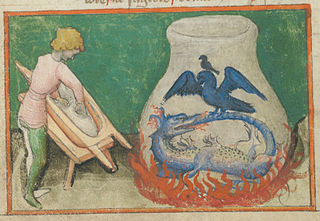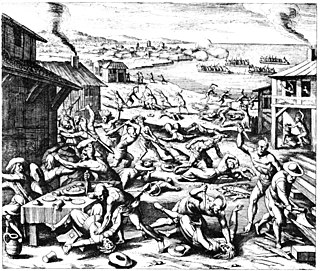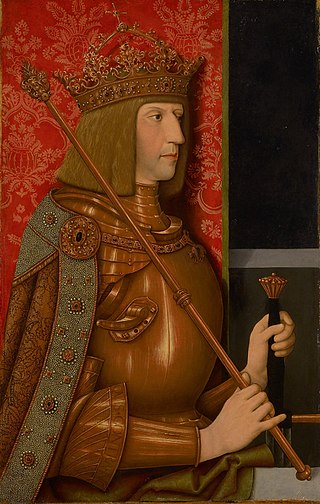Related Research Articles

Alchemy is an ancient branch of natural philosophy, a philosophical and protoscientific tradition that was historically practiced in China, India, the Muslim world, and Europe. In its Western form, alchemy is first attested in a number of pseudepigraphical texts written in Greco-Roman Egypt during the first few centuries AD.

Giordano Bruno was an Italian philosopher, poet, cosmological theorist, and Hermetic occultist. He is known for his cosmological theories, which conceptually extended to include the then novel Copernican model. He proposed that the stars were distant suns surrounded by their own planets (exoplanets), and he raised the possibility that these planets might foster life of their own, a cosmological position known as cosmic pluralism. He also insisted that the universe is infinite and could have no center.
The 1540s decade ran from 1 January 1540, to 31 December 1549.

The 1680s decade ran from January 1, 1680, to December 31, 1689.

The 1620s decade ran from January 1, 1620, to December 31, 1629.
The 1600s ran from January 1, 1600, to December 31, 1609.

The 1500s ran from January 1, 1500, to December 31, 1509.

Maximilian I was King of the Romans from 1486 and Holy Roman Emperor from 1508 until his death in 1519. He was never crowned by the Pope, as the journey to Rome was blocked by the Venetians. He proclaimed himself elected emperor in 1508 at Trent, thus breaking the long tradition of requiring a papal coronation for the adoption of the Imperial title. Maximilian was the only surviving son of Frederick III, Holy Roman Emperor, and Eleanor of Portugal. Since his coronation as King of the Romans in 1486, he ran a double government, or Doppelregierung, with his father until Frederick's death in 1493.

Christina was a member of the House of Vasa, and the Queen of Sweden in her own right from 1632 until her abdication in 1654. She succeeded her father Gustavus Adolphus upon his death at the Battle of Lützen in 1632, but began ruling the Swedish Empire when she reached the age of eighteen in 1644.

Arthur Edward Waite was a British poet and scholarly mystic who wrote extensively on occult and esoteric matters, and was the co-creator of the Rider–Waite tarot deck. As his biographer R. A. Gilbert described him, "Waite's name has survived because he was the first to attempt a systematic study of the history of Western occultism—viewed as a spiritual tradition rather than as aspects of protoscience or as the pathology of religion."
Greek Muslims, also known as Grecophone Muslims, are Muslims of Greek ethnic origin whose adoption of Islam dates to the period of Ottoman rule in the southern Balkans. They consist primarily of the descendants of the elite Ottoman Janissary corps and Ottoman-era converts to Islam from Greek Macedonia, Crete, and northeastern Anatolia and the Pontic Alps. They are currently found mainly in the west of Turkey and the northeast.

The Diocese of Cremona is a Latin Church ecclesiastical territory or diocese of the Catholic Church in northern Italy. It is a suffragan diocese in the ecclesiastical province of the metropolitan Archdiocese of Milan. The bishop of Cremona's cathedra is in the Cathedral of the Assumption of the Virgin Mary.

Albertet de Sestaro, sometimes called Albertet de Terascon, was a Provençal jongleur and troubadour from the Gapençais. Of his total oeuvre, twenty three poems survive. "Albertet" or "Albertetz" is the Occitan diminutive of Albert. Unqualified it usually refers to Albertet de Sestaro, but there was an Albertet Cailla.

The Diocese of Reggio Emilia–Guastalla is a Roman Catholic ecclesiastical territory in Emilia-Romagna, Italy. It has existed in its current form since 1986. In that year the historical Diocese of Reggio Emilia was united with the Diocese of Guastalla. The diocese is a suffragan of the Archdiocese of Modena–Nonantola.

Theatrum Chemicum is a compendium of early alchemical writings published in six volumes over the course of six decades. The first three volumes were published in 1602, while the final sixth volume was published in its entirety in 1661. Theatrum Chemicum remains the most comprehensive collective work on the subject of alchemy ever published in the Western world.

Giovanni Mercurio da Correggio was an Italian itinerant preacher, Hermeticist, and alchemist. Due to his bizarre appearance in Rome on Palm Sunday 1484 he has been believed by some scholars to have not actually existed, but this has been contested with other reports that corroborate his eccentricities. His most notable follower was Lodovico Lazzarelli, an Italian humanist poet and alchemist, who writes his accounts of da Correggio in his Epistola Enoch.

Guglielmo Gratarolo or Grataroli or Guilelmus Gratarolus was an Italian doctor and alchemist.
Michael Toxites, born Johann Michael Schütz was a doctor, alchemist and poet of the Holy Roman Empire.
References
- ↑ see "Collections des traités alchimiques -". Archived from the original on 2007-03-15. Retrieved 2007-03-15..
- ↑ Aldine edition 1546, edited by Janus Lacinius, a Calabrian.
- ↑ Didier Kahn, Alchimie et paracelsisme en France à la fin de la Renaissance (1567-1625), Cahiers d'Humanisme et Renaissance (Droz, 2007), 42-45
- ↑ [ars hæc] partim est naturalis, partim divina sive supra naturam
- ↑ Modena, Biblioteca Estense MS. latino 299 (Alpha M 8, 16). XV/XVI secolo. 59 folii. Carta Petrus Bonus. Incipit pretiosa et notabilis Margarita Novella et ipsa est quaestio de speculatione et virtute artis alchimie... per magistrum Bonum Ferrariensem scilicet utrum ars alchimie sit omnino vere vel fantastica with an epigram by Lodovico Lazzarelli http://www.levity.com/alchemy/almss22.html
- ↑ The son-in-law of Johann Petreius.